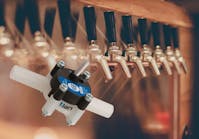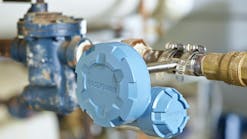The importance of calibration software in process instrumentation
Taking the time to calibrate your process instrumentation is crucial to ensure accurate measurements and control of pressure and temperature in your industrial processes. With so many different types of instruments in the same environments, it is extra important that each one is properly calibrated not only to be certain the measurements are accurate but also to ensure safety and keep the system working at optimal levels.
Having any measurements off can create issues down the line with flow, level, pressure or temperature. Those miscalculations can put stress on your assets or even lead to lost revenue. That is where combining the use of calibration software, asset management software and condition monitoring can prevent unplanned downtime and keep everything running smoothly.
Calibration software
The process calibration workload includes test and measurement equipment such as process meters or portable field calibrators. Installed instruments include pressure or temperature transmitters, switches and gauges. Electrical, temperature, pressure or a combination of parameters need to be maintained and calibrated.
Plus, each instrument in the process has a different calibration life cycle. Some need to be calibrated more often than others, and the schedules are not always on the same intervals. That is where using calibration software to automate and organize keeps all of your assets calibrated and on track. Calibration software has a breadth of functionality to ensure every aspect of your calibration needs are tracked and managed in one location.
Instrument inventory and history
Calibration software can keep a running inventory of your instruments and assets. Beyond just the list of what you have available, the software can keep a running history of when it was last calibrated, as well as any information from the calibration itself. Knowing where an instrument has been and how it has performed can help you plan for additional calibration time or even replacements without the panic or budget scramble of needing to buy a new instrument at the last minute.
Calibration schedule
Following the guidelines from manufacturers, or your own company guidelines, calibration software can keep a running schedule of when instruments need to be recalibrated based on when they were last calibrated. The software can remind you to keep your instruments properly calibrated over the years.
Procedures
Calibration software database can store configuration information about each process instrument, which allows an administrator to download tasks to the calibrator. This way, the instrumentation technician can perform the calibration, including as-found and as-left test results, which are stored on the calibrator. The information available within the software can ensure that you are following the same procedure each and every time and maintaining compliance with regulatory standards as you go.
Some software even offers mobile-friendly versions, so you can keep everything organized no matter where you need to go. For on-site or field calibrations, this setup can be ideal to maintain consistency.
Reports
Once calibration results have been uploaded back to the software and populated into the database, many calibration software programs can also create reports that can be printed out or emailed to either clients or up the management chain to provide proof, maintain your data or perform trend analysis. The reports can be customized to meet a wide range of requirements depending on what you need.
Asset management software
Many calibration software platforms have some sort of asset management capabilities integrated within, but there are also options that are separate or more robust depending on your needs. Combining calibration and asset management together can have some benefits — for example, convenient access to all of the information in one location.
When a more robust option is necessary, these can get as detailed as when adjustments were required on an instrument or how long in between the last two adjustments were performed. By tracking this information, you can stay on top of, and even plan for, when an asset may need extra attention or replacement without taking an unexpected hit to productivity or the budget.
Condition monitoring
Monitoring the condition of your assets through vibration, data logging or a preventive maintenance walkthrough can help catch impending issues before they become too big to deal with. While this step in the process is not part of calibration or asset software, it can play a big part in keeping all assets and tools running in optimal condition while limiting unexpected downtime.
For some pressure gauges, there are software options that can set up for a remote logging event, configuring the reading rate, duration and measurement units. The software will upload the recorded measurements logged and can be reviewed or printed in a report.
As your team runs these kinds of monitoring actions, you can begin to build a baseline of what is normal for each of your assets. Over time, when something is starting to show signs of stress or not running within the same parameters as previously recorded, you know it is time to look into the asset and figure out if something could be going wrong.
In most cases, this is where you would grab a tool to further investigate the possible issues. As with most items in process instrumentation, this brings our system back full circle. In order to accurately assess problems and repair the assets, you need tools that are properly calibrated.
Automating and digitally organizing as much of your workflows as possible can help you notice an issue early on. From having a properly calibrated instrument on-hand whenever you may need it, to knowing what has been going on with your assets and having a baseline on which to compare any new information, can all work together to keep your process running as smoothly as possible.
Calibration software ensures that your instruments are ready to go and are taking accurate measurements of the liquids and gases in your facility. Asset management software ensures a solid history of your assets, not just what is on the floor, but how it has been running and what repairs it has seen. The final piece of the puzzle is including condition monitoring in your process. This aspect of preventive maintenance can give you a solid view of when an asset is acting up or may need repairs long before a critical issue causes unplanned downtime.
Bob Crepps is a product specialist with Fluke Corporation, focusing on the process calibration tools group. He has more than 30 years of experience providing technical support and training in the electronics industry.

Bob Crepps | Product specialist with Fluke Corporation
Bob Crepps is a product specialist with Fluke Corporation focusing on the process calibration tools group. With more than 30 years of experience providing technical support and training in the electronics industry, Crepps has been offering his expertise to Fluke Process Tools for 10 years.



